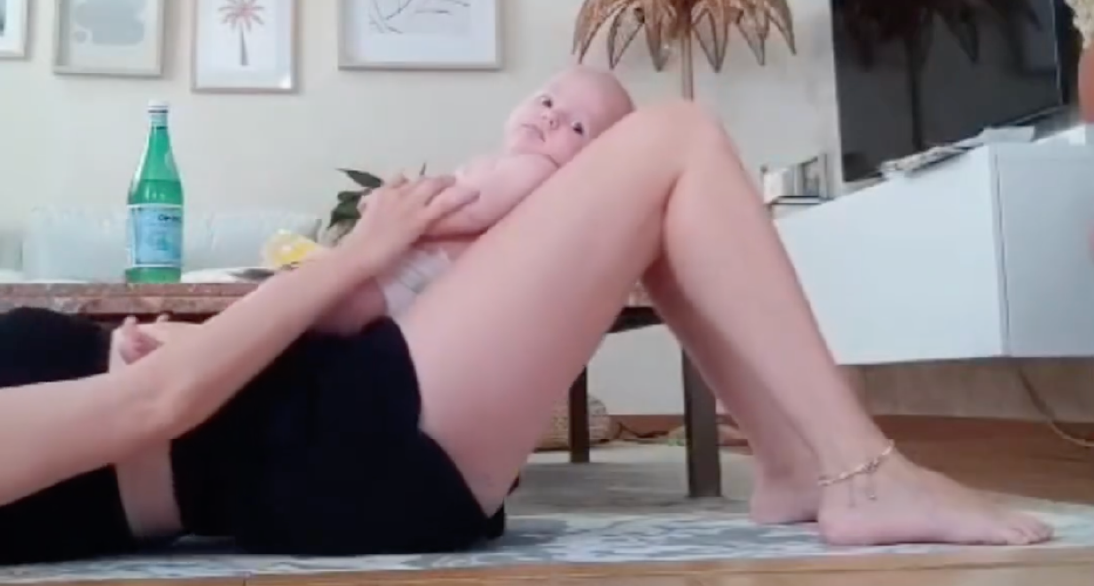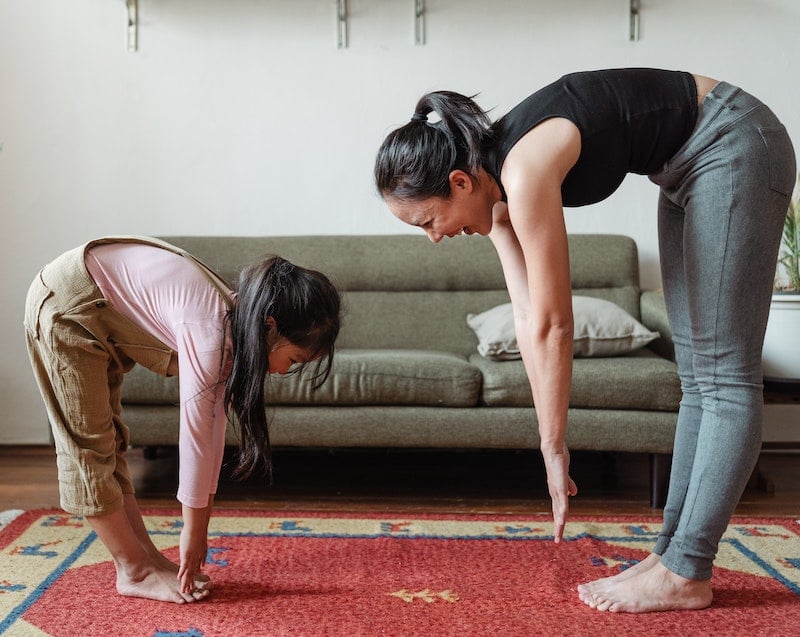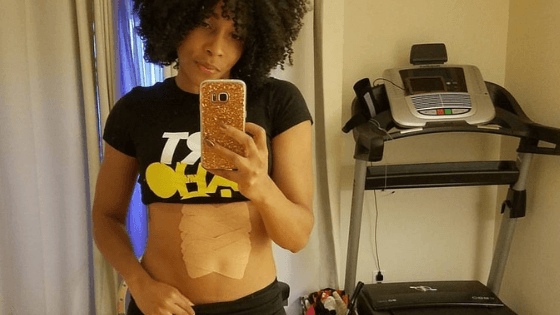Diastasis recti in pregnancy is healthy and normal. The two sides of your rectus abdominis muscle that run vertically down the front of your stomach move apart. As your uterus and baby grow, skin, muscle and connective tissue all stretch to make room. The linea alba connective tissue stretches as the ‘inter-recti’ distance between the two parts of muscle increases.

Most, if not all, pregnant women will have some level of diastasis recti by the third trimester of pregnancy.
Can you avoid diastasis recti in pregnancy?
There is no conclusive research that tells us what determines the level of your diastasis recti in pregnancy. Some claim that exercise during pregnancy can reduce the incidence or severity of DRA, whilst other studies claim there is no difference*. Genetics will certainly play a role and other factors such as BMI, weight gain or age also are inconclusive.
You definitely do not want to be obsessing over a diastasis gap during pregnancy, or trying to measure it too often either. Know it is normal, and you can help your body to heal afterwards.
What you we do know, is that being aware of your alignment and keeping your core and pelvic floor muscles supple and strong, will help.
How do you know if you have it?
There’s no need to do a full crunch-type test for diastasis recti whilst you’re pregnant. Your body is still changing and growing every day, and there is no benefit to poking around in your stomach or trying to measure a gap.
Just look and feel. You may see a ridge shape vertically down your tummy, maybe when you get up form lying or sitting, or when doing certain exercises. If the ridge is starting to show more with some workouts, you can choose to modify or avoid those exercises for now.
What can you do to heal it?
Focussing on your breathing and alignment to control intra abdominal pressure will help minimise the bulge. This means spending some time (MUTU Core foundational exercises take just 12 minutes a day!) getting connected with your core and pelvic floor muscles. These foundational breathing strategies will help keep you stable and strong throughout pregnancy. They will also empower you to to recover and heal afterwards.
Notice the postural shifts as your pregnancy progresses. As your abdomen grows, walking in good alignment will help.
Wear supportive and cushioned, but neutral-soled shoes. Avoid raised heels where possible. Walk with your feet pointing forward, not out to the sides, and think about driving from your glutes and hamstrings. Try not jut your chest forwards or your head, the more you can support your glorious pregnant body with a strong core, glutes and good posture, the better you’ll feel.

Adapting exercise for diastasis recti in pregnancy
You may want to reduce or avoid sit up or plank type movements as your pregnancy progresses. And if you weren’t doing them before, don’t start now. But if you love your ab work, reduce the load, reduce any resistance and modify the exercises to make them easier for now.
If a diastasis ridge is increasingly obvious when you roll over, get up from sitting or lying, or do certain exercises, then modifying movement to reduce intra abdominal pressure will help.
If you feel any tenderness or pain in the midline as you move, definitely get checked out by a Pelvic Health Physical Therapist. Avoid the exercises that cause pain.
More on ab workouts during pregnancy here.
The MUTU System program is clinically trialled and proven for diastasis recti. It includes clear modifications for pregnancy that are safe, beneficial and recommended by PT’s and Doctors. These gentle, highly effective exercises, alignment and stretching techniques prepare and strengthen you for pregnancy, labor and beyond.
*Fernandes da Mota PG, Pascoal AGBA, Carita AIAD, Bø K. Prevalence and risk factors of diastasis recti abdominis from late pregnancy to 6 months postpartum, and relationship with lumbo-pelvic pain. Man Ther. 2015 Feb 20(1):200–5.http://www.mskscienceandpractice.com/article/S1356-689X(14)00181-7/fulltext












